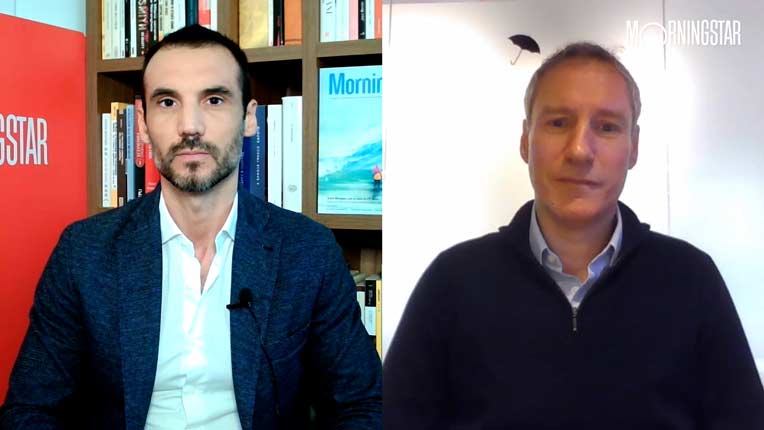Jason Stipp: I'm Jason Stipp for Morningstar.
We got the government employment report for April on Friday. It showed that 165,000 jobs were added to the economy. This was above consensus estimates.
Joining us to give his take is Francisco Torralba, an economist in Morningstar's Investment Management division. Bob Johnson, who normally joins this conversation, is out of the office today.
Thanks for joining us, Francisco.
Francisco Torralba: Glad to be here.
Stipp: So we did get above consensus at 165,000. We also saw some revisions to prior months, February and March. What's your take on that number? Did it surprise you how good it was in April?
Torralba: I was surprised. I was expecting somewhere around 125,000, and like you said, the consensus was 135,000. So I was surprised.
I was especially surprised by the revisions to February and March, which altogether added 110,000, I believe, combined. So I think it was better than expected, I guess. But overall there are other factors kind of muting any optimism that one might have about the report.
Stipp: When we see prior months revised in the way that they are, it's kind of important to look beyond just the one month's report.
So when you're looking at that 165,000 that we got, do you think that's emblematic of what we should be seeing, or maybe it looks a little too high for what we should see, if you were going to average it out over several months?
Torralba: It's been around average over the past 12 months, like you said, with a lot of variation from month to month, with lot of revisions. I wouldn't expect anything very different over the next nine months, through the end of the year--somewhere around 150,000 to 200,000 on average with a lot of variation.
Stipp: OK. One of the sectors that helped us was temporary help. Then we also saw on the downside government subtracted about 11,000 jobs.
Let's start with government. With the cutbacks that we've been seeing in the federal government spending, do you expect that headwind to even grow from 11,000 in the months ahead?
Torralba: Yes, I think that reductions in federal government payrolls will probably increase. We haven't even seen the effects of the sequester yet, because, if you remember, the government cuts took effect on March 1. So if the government starts sending notices that people need to go on furlough or to be laid off, that will start taking effect in April. And people who are on furlough and receive any kind of payment, those are counted, according to the establishment report, they're counted as employed people. So we haven't even seen the beginning of that effect.
On the local and state payroll side, we shouldn't see any major losses of employment, because those two sectors already did their layoffs over the past three years. In fact, we are seeing a stabilization in the payrolls of local and state governments.
Stipp: You also pointed out that we saw some payroll declines in some cyclically sensitive areas of the economy. What do you make of that, and what might that say about some of the economic underpinnings of the employment market right now?
Torralba: If you look at the composition, what you see is the goods-producing sector lost jobs, and the services sector increased jobs, and then, like you said, the government second lost a few jobs.
It's really remarkable that there was weakness in the construction sector, the manufacturing sector and the mining sector, all three. You usually see a small, short-term fluctuations in those sectors due to the inventory cycle, the manufacturing cycle or temporary soft conditions in global economic conditions. But I wouldn't make a big deal of it without seeing more months of accumulating evidence.
One thing that worries me, thinking about how many sectors had increased and how many decreased, is a thing called the diffusion index, which is the percentage of industries with increases in payrolls. In February, that percentage was over 60%. More than 60% of industries reported an increase in payrolls.
Stipp: So relatively broad based.
Torralba: Yes. But two months later, in April, that number has declined to less than 55%, and one month after another, that number has been lower. That worries me, because sure, the headline number is good, but it's less broad based, like you said. That's a statistic I would keep an eye on.
Stipp: Let's talk about the unemployment rate. So it did tick down to 7.5% from 7.6%. There are concerns that when that rates comes down, it's not always a good thing. It could mean that people are leaving the labor force. What was the reason behind that small improvement that we saw in April? And then what are some of the longer-term trends on why we've seen that rate coming down.
Torralba: So this particular month, I think what we saw was what I call a "good quality" decrease in the unemployment rate, which is when the labor force participation stays constant or increases, and the employment population rate increases. So we saw that this month, and that's a good thing. It means more people are working relative to the population.
If you look at a longer time span, like the last 12 months, the unemployment rate has gone down from 8.1% to 7.5% in April. That 0.6 percentage point decline, most of it has been due to a decline in the labor force participation rate, which is not good. It means fewer people are either working or looking for work.
There are demographic trends behind that. The population is getting older. As people get older, they tend to retire, not work. That would account for about one-third of that decline in the labor force participation rate. But the other two-thirds are not demographic, and my hypothesis is that it has to do with discouraged workers, who no longer look for work.
Stipp: So the 7.5% [unemployment rate] is not exactly what the Fed wants to see. They're trying to aim for a 6.5% unemployment rate, and they've said they're going to continue stimulus efforts to get down to 6.5%. This may imply that the Fed believes that 6.5% is a more normal range for what unemployment should be in our country. Do you think that 6.5% is a range that's reasonable, that would be a normal unemployment range? Where do you fall on that front?
Torralba: So this is a very important question, one in which there is no consensus among economists: What is the structural unemployment rate. Prior to 2008, I think most estimates of the structural unemployment rate were perhaps 6%, somewhere between 5.5% and 6%, and there may be some anchoring to that number among analysts, maybe even in the Fed. But you have to remember, because of the long duration of unemployment, a lot of these people are not going to come back to the labor force ever; they're not going to work ever again, especially those in their 50s and 60s in sectors that have suffered a lot of payroll losses.
So the structural unemployment rate is probably higher than anywhere between 5.5% and 6%. I don't know if 6.5% is the right number. In my opinion, to be safe, I think some number between 6.5% and 7.5%, so a number centered around 7% is a fair estimate of the structural unemployment rate. The unemployment rate could certainly fall below 7%, but it will mean the economy is sort of growing above its possibilities. So I think the Fed may be shooting for too low with 6.5%.
Stipp: All right, Francisco. Some very interesting insights on where do you see the unemployment market going from here, and some differences that you see perhaps from the past. Thanks for joining us today in offering your insights.
Torralba: Thank you. Thank you for having me here.
Stipp: For Morningstar, I'm Jason Stipp. Thanks for watching.




















